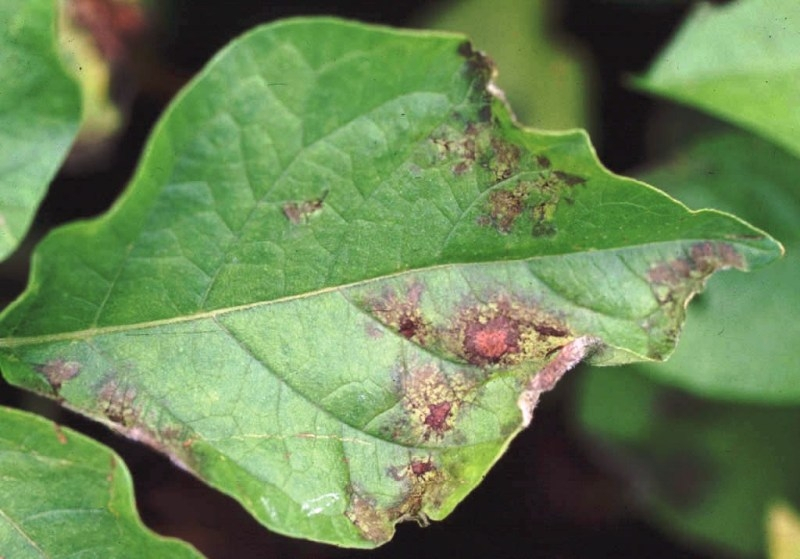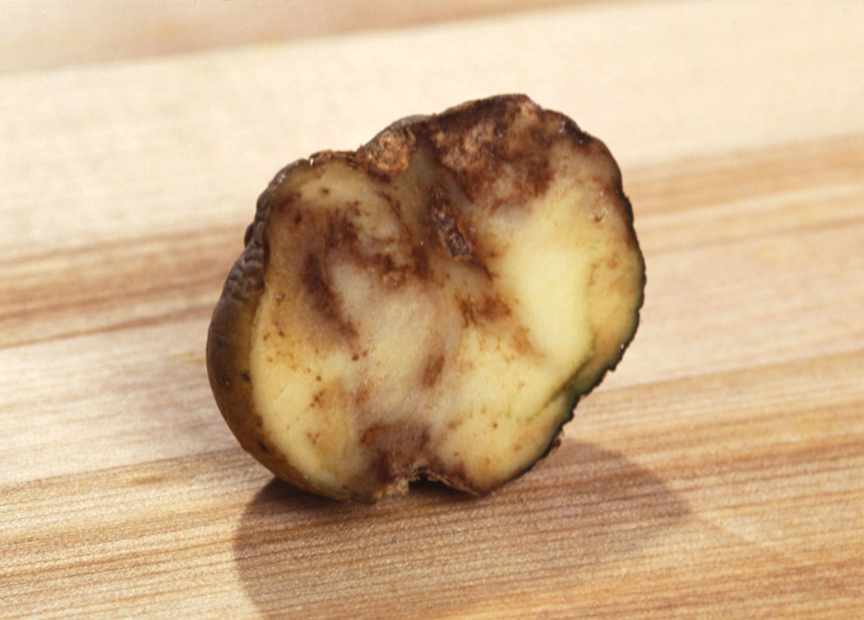So far, they seem to be winning against late blight, which caused the Irish famine of the 1840s

New Jersey potato and tomato farmers may have dodged a threat this summer from an ancient and familiar enemy. Late blight made an alarming appearance in two New Jersey counties in early July. Late blight wiped out seven consecutive Irish potato crops between 1845 and 1852, devastating a population dependent on potatoes for food. A million people died of starvation and its attendant diseases in those years, and two million people left the country, many for the United States, during Ireland’s Great Famine.
“Late blight isn’t uncommon in New Jersey,” said Andrew Wyenandt, plant pathologist and extension specialist with Rutgers’ New Jersey Agricultural Experiment Station. “But it typically shows up in late August or early September. When it shows up in late June or early July, that means it has the potential to be a problem all (growing) season. The earlier it shows up, the bigger a problem it can be.”
Wyenandt helps farmers and gardeners protect crops from disease. He tries to anticipate, using weather stations, reports from his colleagues in other states, and common sense to spot trouble before it gets here, and to sound the alarm for crop growers. He and his colleagues have been searching for late blight since it appeared several weeks ago in North Carolina. On July 1, late blight was reported on a potato farm in Kent County, Delaware. The next day, it was confirmed directly across Delaware Bay on four farms in Salem County, New Jersey, and on an organic tomato farm in Mercer County, along the Delaware River.
Wyenandt said no further outbreaks had been reported by mid-July, which allowed him to breathe a little easier, but not exactly to relax. “Late blight is one of the scariest pests,” Wyenandt said. “It gets people’s attention. It’s so destructive.”

Late blight attacks potato and tomato plant leaves first, then settles in the tuber or fruit. It’s hard to see in its early stages, and, once it takes hold, is easily spread by wind and nourished by moisture. Heavy rain, wind, and high humidity create late blight’s ideal environment. It will not cause famine in New Jersey, but demands immediate attention.
To forewarn farmers and gardeners, Wyenandt and his colleagues rely on a mix of high- and low-tech tools. Rutgers recently joined the Network for Weather and Environment Applications, maintained by Cornell University, which provides up to the minute, highly localized weather information from more than 100 locations in the northeastern United States – plus pest prediction models based on that information. This new alliance has allowed Rutgers to tap into 40 of the network’s stations in New Jersey, in addition to the 200 to which Wyenandt and his colleagues already had access.
Beyond that, Wyenandt and his colleagues advise farmers to scout their fields. “You need to get some eyes on the ground,” he said. Farmers who suspect blight should call their local county extension agent to confirm it.
Once late blight is confirmed, farmers need to destroy the infected plants and use protective fungicides on the rest of their crop. Some fungicides can be applied only by farmers with commercial pesticide licenses. Organic farmers and home gardeners often use organic fungicides, such as copper hydroxide, which can be purchased at garden stores.
Early in July, with the reports from Salem and Mercer counties in mind, Wyenandt hoped for “four or five hot, dry days with no wind.” In the middle of the month, he got exactly that. But because late blight was early this year, it remains a potential problem. “We’ll be okay – until it rains,” he said.